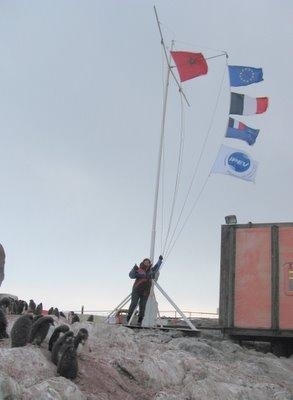Merieme Chadid, born in Casablanca, Morocco, on October 11, 1969, has had a fascination for astronomy since she was a child. Early on, her interest was piqued when her brother gave her a book on Johannes Kepler, the 17th century German mathematician and astronomer who established the foundation for Isaac Newton's theory of universal gravitation. She was further inspired one day when she listened to a radio broadcast by Moroccan Albert Pilot, a great lover of astronomy. She felt compelled to contact him and express her interest in the field and Albert Pilot replied, encouraging her to work hard and to follow her passion.
Merieme earned an MA in physics from the University of Casablanca and then moved to France to study imaging science in Nice. She spent three years in the southeast of France at the Observatoire de Haute-Provence, where she obtained a PhD on her study, "Stellar Pulsation and Evolution," exploring a mysterious class of pulsating stars.
She obtained a post as an engineer astrophysicist at the National Center for Scientific Research (CNRS) in Montpellier, France. While there, she was selected by the European Southern Observatory as one the first working astronomers to install and run the Very Large Telescope (VLT) on Paranal Mountain in the Atacama Desert in Chile, the driest desert in the world.
 |
| Merieme, planting the flag of Morocco at the South Pole (lailalalami.com) |
One of her proudest accomplishments has been her successful installation of astronomical experiments at Dome C in the South Pole which is, as she says, "right in the heart of the Antarctic continent, in one of the coldest, most deserted and inaccessible places in the world."
As Merieme explains, "This is a unique place where prevailing conditions are of extreme cold, isolation, and where it is night several months of the year. It then becomes possible to observe the stars on a continuous basis. There is no soul that lives less than 1,000 miles away. The place is located at 3200 meters, but the weather is as if we were at 4000 meters. Installing an observatory in such an environment resembles a space mission in that we must check all the atmospheric parameters (turbulence, transparency, scintillation (twinkling), aurora, etc.)."
Merieme says she was very pleased to have been chosen as the first woman researcher for this three-month mission.
In 2001, she had joined the Civil Service in France and is currently stationed at the Observatoire de la Cote d'Azur and the University of Nice-Sophia Antipolis.
Merieme Chadid is married to Jean Vernin (the astrophysist who is behind the project at Dome C) and has two children, Tycho and Leyla.
Page created on 6/28/2015 8:24:25 PM
Last edited 9/4/2020 7:21:00 AM

Cliquez ici pour lire l'histoire en français